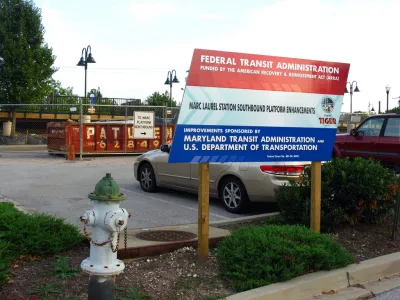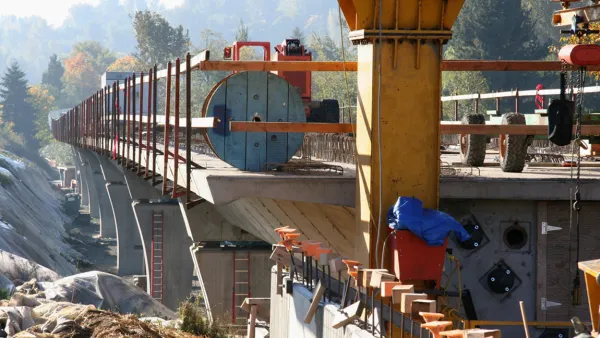The USDOT secretary is making big promises, but an entrenched system makes it difficult to implement long-lasting, systemic change.

Writing in Governing, Jake Blumgart assesses the potential for significant change in the U.S. Department of Transportation as newly appointed secretary Pete Buttigieg champions more diverse modes. "Many of the seemingly groundbreaking gestures the former Democratic presidential aspirant is making, like riding his bike to cabinet meetings or denouncing the racist history of highway policy, have precedent during Barack Obama’s presidency." The department, writes Blumgart, has historically done "little more than overseeing the distribution of funds based on strict formulas that allocate resources to the states." Much of its funding is spent on roadways, and "[m]ost of its tens of thousands of workers are air traffic controllers."
The problem with Democratic administrations, says Beth Osborne, director of Transportation for America, is that "[t]hey have so much confidence that they seem to not feel the need to make actual structural change that will survive them." Former Transportation Secretary Ray LaHood, who served under President Obama, began shifting department policy by prioritizing transit and bike and pedestrian projects through the TIGER (Transportation Investment Generating Economic Recovery) program, but "during Donald Trump’s administration all such spending was eliminated from TIGER’s books." Proposals to implement a Vehicle Miles Traveled (VMT) tax by LaHood and Buttigieg have been rejected by their respective administrations.
President Biden's infrastructure plan, with its "massive allocations for intercity passenger rail, mass transit, and motor vehicle safety," could be "the most dramatic change to federal transportation policy since the 1950s," but supporters worry that the Democrats' tight majority in Congress and the Senate's affinity for compromise could lead to a "dramatically downsized bill."
FULL STORY: Can Pete Buttigieg Really Change Transportation Policy?

National Parks Layoffs Will Cause Communities to Lose Billions
Thousands of essential park workers were laid off this week, just before the busy spring break season.

Retro-silient?: America’s First “Eco-burb,” The Woodlands Turns 50
A master-planned community north of Houston offers lessons on green infrastructure and resilient design, but falls short of its founder’s lofty affordability and walkability goals.

Delivering for America Plan Will Downgrade Mail Service in at Least 49.5 Percent of Zip Codes
Republican and Democrat lawmakers criticize the plan for its disproportionate negative impact on rural communities.

Test News Post 1
This is a summary

Test News Headline 46
Test for the image on the front page.

Balancing Bombs and Butterflies: How the National Guard Protects a Rare Species
The National Guard at Fort Indiantown Gap uses GIS technology and land management strategies to balance military training with conservation efforts, ensuring the survival of the rare eastern regal fritillary butterfly.
Urban Design for Planners 1: Software Tools
This six-course series explores essential urban design concepts using open source software and equips planners with the tools they need to participate fully in the urban design process.
Planning for Universal Design
Learn the tools for implementing Universal Design in planning regulations.
EMC Planning Group, Inc.
Planetizen
Planetizen
Mpact (formerly Rail~Volution)
Great Falls Development Authority, Inc.
HUDs Office of Policy Development and Research
NYU Wagner Graduate School of Public Service





























